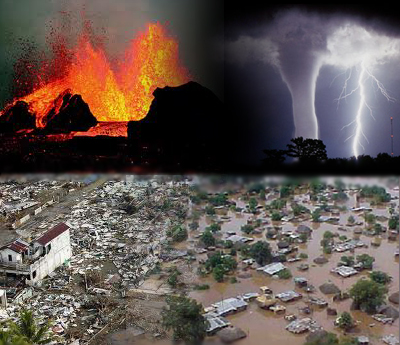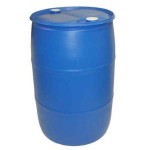
As many survival experts will tell you, anything can happen to anyone at any time. No crisis should be an unexpected surprise and it will not be if you are prepared. It is never a question of if something will happen the only question is when.
Cyber terrorists can shut down power grids, cause malfunctions at water treatment plants and/or shut down rail and transportation systems. They can do all this once they have breached security protocols. It has happened in the past and it will happen again. Once a disaster of this magnitude strikes, you may very well be on your own for months or even longer. Typically, strikes against a country’s infrastructure are just a prelude to things to come, a softening of the defenses if you will. The citizens of any country where this happens may see years of rebuilding and chaos before life, if ever, is back to the new normal.
Natural Disasters Relatively Short Term Effects
As proven by recent and not so recent events, natural disasters can still wreak havoc for weeks after the disaster has struck. The days after are what you are really preparing for. You are getting ready for weeks without electricity, gas, clean water and impassable roadways. However, the storm is not always to blame for the entirety of the devastation. Lack of preparedness and governmental bureaucracy can slow responses and make the effects of any natural disaster more devastating.
The standard 72-hour stockpile of emergency essentials is obsolete. It can be weeks before utilities are restored and you have to be prepared for this. Because of ailing power grids and ad hoc infrastructure projects storms that are not even classified as hurricanes can cause tremendous damage and the effects can linger for weeks into months.
Short-Term Preparedness
You should have at least 21 days of emergency essentials that are specifically for emergencies caused by natural disasters. People tend to get complacent when nothing happens and start to use their supplies for camping trips or for children’s backyard adventures. Your emergency supplies must be maintained at an acceptable level at all times. Some may stockpile items that have short expiration dates and must use the supplies before they expire. This is why choosing the right foods are important to ensure you will always have them when needed.
Economics can play a role in how well you can prepare. Finances are one of the reasons people do not prepare properly. You can however, prepare gradually to reduce the economic burden by picking up one or two items each time you do your regular shopping. You can also inventory tools and materials you may already have that can be used in a survival situation. Your priorities are water, shelter, food and energy for cooking and heating.
Water is a priority and not only should you have an adequate supply you will need the means to collect and purify more in the event you run out. The recommendation is one gallon/four liters daily per person. This amount considers personal hygiene, but does not consider cooking and medical treatment. If you plan to use dehydrated foods, which require water for reconstitution you will have to have additional water up to three gallons per person daily.
Long-Term Preparedness
Certain situations can cripple any country for years. A nuclear surface detonation can cause damage to the point it can take years before workers can even enter the area meaning that the power grid and certain infrastructure will take years to repair providing it can be repaired at all. Cities and towns would be uninhabitable and certain manufacturing and transportation sectors would fail almost immediately. You would be affected no matter where you live. Many goods and services would disappear overnight.
To prepare for this type of situation you have to look at eventually developing your own food and water source that you control. In the meantime you need enough food and water stockpiled that will allow you the time to develop alternative sources. You will need to begin growing and raising your own foods by gardening and raising livestock. You should begin digging wells almost immediately after the disaster strikes to ensure the quality of your drinking water for long-term. It will take at least two years before you see any meaningful harvest from your garden, and even longer for livestock. It is recommended that you have between two and three year’s worth of food and water.
Choosing the Right Foods for Any Situation
Canned goods have traditionally been an emergency food source because the foods can be literally eaten from the can without heating or any preparation at all in most cases. Some condensed products may require water and heating for best results however. The shelf life is approximately one year from date of purchase. The recommendation for each person daily is one can of meat based product for protein, one can of vegetables and one of fruit. Supplement with peanut butter, crackers and beef jerky. The drawbacks include limited variety, relatively short shelf life and the need to have multiples of cans on hand for a balanced diet. Canned food is relatively inexpensive and should be considered a food source for short-term. It is only recommended as a supplemental food source for long-term.
Meals Ready to Eat (MRE’s) as their name implies are ready to eat without preparation or heating. Each package is a complete meal approximately 1,200 calories each and usually come with traditional condiments and eating utensils. The packages are designed so they can be immersed in hot water for heating. The shelf life is between five and seven years. Storing MRE’s between 60ᵒF/15.5C and 40ᵒF/4.4C will extend the shelf life closer to seven years. The recommendation is two meals per person daily. There is large variety from which to choose. They can be stored easily by the case (usually 12 per case) or individually. There are military issued MRE’s available on the Internet or in many military surplus stores. Civilian versions are available on the Internet and in most camping stores and camping sections of major retailers. These meals are recommended for short-term as well as long-term use. The military and civilian versions are comparable in most aspects.
Dehydrated foods are popular for long-term survival preparedness. Dehydrated/freeze dried foods can have up to a 30 year shelf life if unopened. The foods do require water and a means to boil water for reconstitution of the foods. The foods typically come in what is called number “10 cans”. Because the food is dehydrated, the cans hold a significant amount of meals per can. The foods can be divided up once opened but this will reduce the shelf life significantly. There is a large variety from which to choose including soups, fruits, meats, deserts, vegetables, sauces and potatoes. Several manufactures offer deals where you can purchase a month’s supply up to any number of years for an individual or family. The amounts are based on two meals a day. These foods are recommended for long-term survival preparedness.
Home canning/preserving is another way to stockpile foods if you have vegetables and fruits you raise yourself. The home canned foods will usually have a shelf life of one year from the date they are canned with some exceptions. The foods are ideal for short-term readiness and if you have a relatively constant surplus that can be preserved you can consider them a long-term survival food. This food source would be considered a renewable and reliable food source during any situation where you can still raise fruits and vegetables and have the resources to preserve the foods.
Water Sources
 Water for the short-term can be stored in plastic water bottles. Water in and of itself has an indefinite shelf life but the containers do not. Plastic water bottles will over time become brittle and crack from exposure to air and light. The typical water bottle purchased full from a retailer has a two-year shelf life, which can be reduced if the sealed containers are exposed to heat and direct light. Water purchased this way is suitable for short periods and it is recommended that you not expect more than a one-year shelf life on any bottled water. Plastic milk jugs full of water have even less than a year shelf life. The plastic used to manufacture milk containers is not designed for storage out of refrigeration and only for the duration of the milk’s life, which is only weeks in most cases. Milk jugs will begin break down relatively quickly when left on the shelf full of water.
Water for the short-term can be stored in plastic water bottles. Water in and of itself has an indefinite shelf life but the containers do not. Plastic water bottles will over time become brittle and crack from exposure to air and light. The typical water bottle purchased full from a retailer has a two-year shelf life, which can be reduced if the sealed containers are exposed to heat and direct light. Water purchased this way is suitable for short periods and it is recommended that you not expect more than a one-year shelf life on any bottled water. Plastic milk jugs full of water have even less than a year shelf life. The plastic used to manufacture milk containers is not designed for storage out of refrigeration and only for the duration of the milk’s life, which is only weeks in most cases. Milk jugs will begin break down relatively quickly when left on the shelf full of water.
Water for longer periods can be stored in food grade plastic barrels and the barrels can be purchased in various sizes up to 50+ gallons. The barrels are usually blue in color to indicate water storage only. It is recommended you fill in place because of the weight. If you use a water hose, make sure it is rated safe for drinking water. Drinking water safe hoses can be found in most Recreational Vehicle (RV) outlets or many camping and retail stores with a camping section.
If the barrels are washed with warm soapy water and rinsed before filling with tap water, no further purification is needed. The water can store indefinitely if sealed tightly. However, water will become stale over time; which has no effect on its purity. To correct, uncap the water and agitate (aerate the water) the barrel to cause air bubbles. The air bubbles in the water will collect dissolved oxygen from the air, which will essentially make the water taste better. Be careful not to contaminate the water when it is uncapped.
Considerations
People will at times fail to prepare for evacuation so when gathering supplies for emergencies make sure you have a plan for transporting your food and water if you have to leave your location. You will have to carry your essentials with you whether you have to leave on foot or in a vehicle. Take your supplies with you to any shelter as well. The foods must be such they can be easily carried by anyone, and eaten without preparation. Water must be distributed so it can be carried by individuals as well. Every member should have his or her own bug out bags ready to go with food and water. This ensures their survival if they become separated.